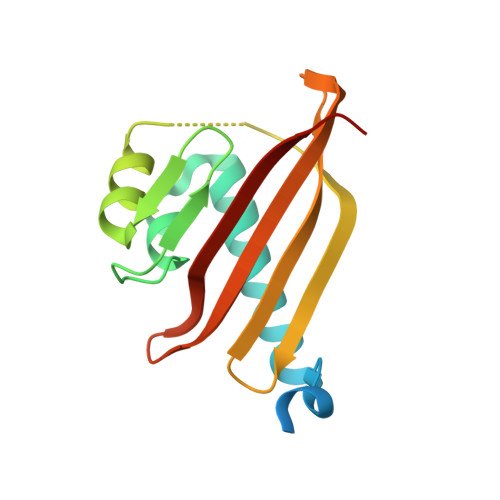A novel decarboxylating amidohydrolase involved in avoiding metabolic dead ends during cyanuric acid catabolism in Pseudomonas sp. strain ADP.
Esquirol, L., Peat, T.S., Wilding, M., Hartley, C.J., Newman, J., Scott, C.(2018) PLoS One 13: e0206949-e0206949
- PubMed: 30399173
- DOI: https://doi.org/10.1371/journal.pone.0206949
- Primary Citation of Related Structures:
6BJT, 6BJU, 6D63 - PubMed Abstract:
Cyanuric acid is a common environmental contaminant and a metabolic intermediate in the catabolism of s-triazine compounds, including atrazine and other herbicides. Cyanuric acid is catabolized via a number of bacterial pathways, including one first identified in Pseudomonas sp. strain ADP, which is encoded by a single, five-gene operon (atzDGEHF) found on a self-transmissible plasmid. The discovery of two of the five genes (atzG and atzH) was reported in 2018 and although the function of atzG was determined, the role of atzH was unclear. Here, we present the first in vitro reconstruction of the complete, five-protein cyanuric acid catabolism pathway, which indicates that AtzH may be an amidase responsible for converting 1,3-dicarboxyurea (the AtzE product) to allophanate (the AtzF substrate). We have solved the AtzH structure (a DUF3225 protein from the NTF2 superfamily) and used it to predict the substrate-binding pocket. Site-directed mutagenesis experiments suggest that two residues (Tyr22 and Arg46) are needed for catalysis. We also show that atzH homologs are commonly found in Proteobacteria associated with homologs of the atzG and atzE genes. The genetic context of these atzG-atzE-atzH clusters imply that they have a role in the catabolism of nitrogenous compounds. Moreover, their presence in many genomes in the absence of homologs of atzD and atzF suggests that the atzG-atzE-atzH cluster may pre-date the evolution of the cyanuric acid catabolism operon.
- Biocatalysis and Synthetic Biology Team, CSIRO Land & Water, Canberra, ACT, Australia.
Organizational Affiliation:
















